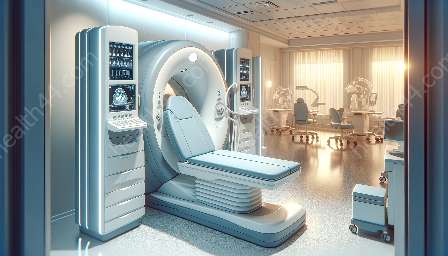Are you curious about the world of hearing tests equipment? In this topic cluster, we will delve deep into the essential role of hearing tests equipment in diagnosing auditory disorders. We will also explore the various types of diagnostic equipment and medical devices & equipment used in this context. So let's embark on an exciting journey to uncover the fascinating realm of hearing tests equipment.
The Significance of Hearing Tests Equipment
Hearing tests equipment plays a crucial role in evaluating the auditory system and diagnosing various hearing impairments. These tools enable healthcare professionals to assess the sensitivity and clarity of a person's hearing, helping to identify any abnormalities or issues that may require further attention.
Types of Hearing Tests Equipment
There are several types of equipment used for conducting hearing tests, each serving a specific purpose in the diagnostic process. Some common tools include:
- Audiometers: These devices are used to measure the threshold of an individual's hearing ability, helping to determine the softest sounds they can perceive across different frequencies.
- Otoacoustic Emissions (OAE) Systems: OAE systems are designed to assess the function of the hair cells in the inner ear by measuring the emission of sound from the cochlea. This test is particularly useful in evaluating hearing in newborns and young children.
- Tympanometers: Tympanometry is a test that measures the movement of the eardrum in response to changes in air pressure. Tympanometers are essential for diagnosing middle ear issues and evaluating the functionality of the eardrum and middle ear bones.
- Speech Audiometry Equipment: This equipment is used to assess an individual's ability to hear and understand speech at varying levels of intensity and clarity, providing valuable insight into their speech perception abilities.
Diagnostic Equipment for Hearing Tests
Diagnostic equipment for hearing tests encompasses a range of sophisticated tools and technologies that aid in the accurate assessment and diagnosis of auditory disorders. Some notable pieces of diagnostic equipment include:
- Impedance Audiometers: These audiometers are equipped with impedance testing capabilities, allowing for the assessment of the middle ear's function, including the detection of conditions such as otitis media and Eustachian tube dysfunction.
- Auditory Brainstem Response (ABR) Systems: ABR systems are used to measure the electrical activity of the auditory nerve and brainstem in response to auditory stimuli, offering valuable information about the integrity of the auditory pathways and potential neurological abnormalities.
- Digital Otoscopes: These high-tech otoscopes feature advanced imaging capabilities, enabling healthcare providers to capture clear images and videos of the ear canal and eardrum for thorough examination and documentation.
- Real Ear Measurement Systems: Real ear measurement systems are vital for verifying the accuracy of hearing aid fittings by measuring the sound delivered to the eardrum, ensuring optimal amplification for individuals with hearing loss.
Medical Devices & Equipment in Hearing Tests
In addition to specialized diagnostic equipment, hearing tests also involve the use of various medical devices and equipment to support the assessment and treatment of auditory conditions. These include:
- Hearing Aids: Hearing aids are indispensable devices that amplify sound for individuals with hearing loss, helping them improve their ability to communicate and engage in daily activities.
- Tympanostomy Tubes: Tympanostomy tubes, also known as ear tubes, are small, cylindrical devices inserted into the eardrum to provide ventilation and drainage for individuals with recurrent middle ear infections or fluid buildup.
- Caloric Testing Equipment: Caloric testing involves the use of specialized equipment to assess the vestibular system by stimulating the inner ear with warm and cool air or water, aiding in the diagnosis of balance and dizziness disorders.
- Hearing Protection Devices: These devices are designed to reduce exposure to excessive noise levels, safeguarding individuals from potential hearing damage in loud environments such as industrial settings or during recreational activities.
By understanding the significance of hearing tests equipment, the diverse types of diagnostic equipment, and the range of medical devices and equipment involved in these assessments, one gains a deeper appreciation for the comprehensive approach taken to address auditory health and well-being. As technology continues to advance, the evolution of hearing tests equipment and related medical devices and equipment will undoubtedly contribute to improved diagnostic accuracy and treatment outcomes for individuals with auditory challenges.


